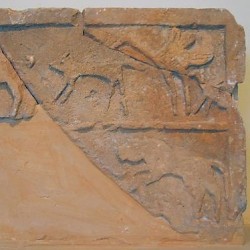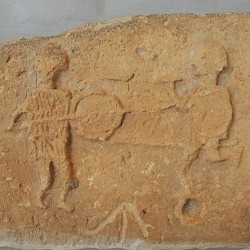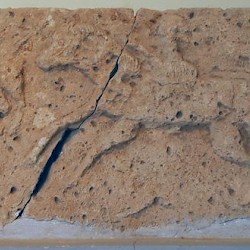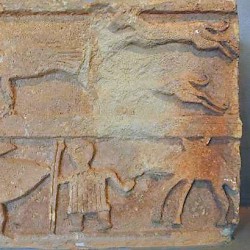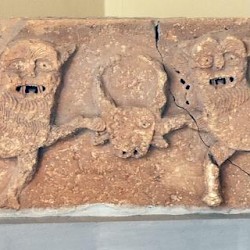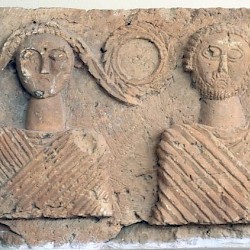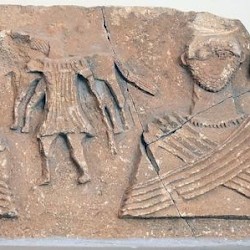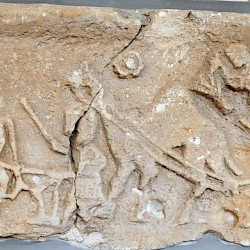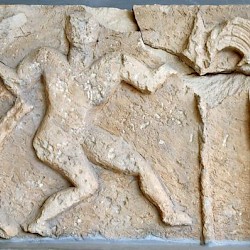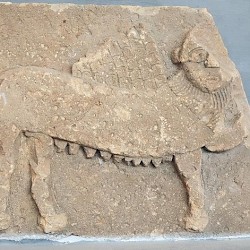Ghirza: Mausoleum North-D-G
Q69121906Ghirza: Roman town in Libya, one of the main archaeological sites of the country.
Ghirza: Mausoleum North-D, E, F, and G
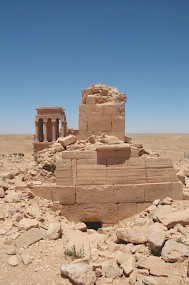
Ghirza's North Cemetery is about half a kilometer west of the center of the desert town. Unlike the tombs on the South Cemetery, which look like obelisks, the mausoleums of this cemetery resemble temples, comparable to the mausoleum of Qasr Banat. In Graeme Barker e.a., Farming the Desert. The UNESCO Libyan Valleys Archaeological Survey (1996), the North Cemetery of Ghira is known as Gh129.
The first photo shows, in front, Mausoleum F, and, in the background, Mausoleum C. Mausoleums D, E, F, and G are, compared to the splendor of Mausoleums A, B, and C, extremely poorly preserved. Mausoleum G has even vanished completely.
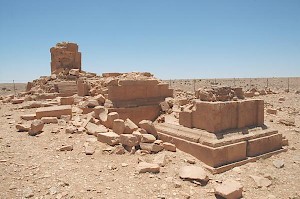
The reliefs of these monuments have been transferred to the archaeological museum of Lepcis Magna. It is impossible to establish the chronology, but the youngest of these was probably built somewhere in the first half of the fifth century, which fits with the hypothesis that the North Cemetery contains the tombs of seven successive generations of Marchii.
The decoration of these monuments was fairly common. We recognize, for example, the two hyenas and a ram's head (a symbol of the god Ammon?) that also decorates Mausoleum G of the South Cemetery: Among the other reliefs on the tombs of Ghirza's northern cemetery are warriors, hunters, animals, farmers, portraits.
